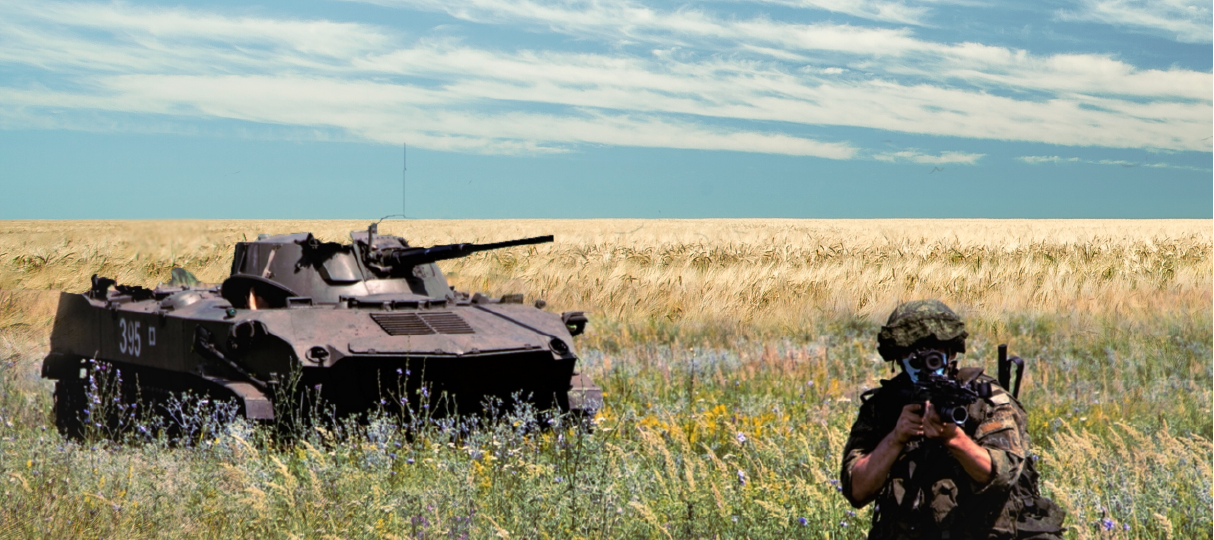A nation must think before it acts.
Introduction
During March and April 2021, the Russian military conducted a large-scale buildup in its regions bordering Ukraine, including Crimea, which Russia annexed in 2014. Scores of videos appeared on TikTok, Telegram, Twitter, and other social media sites showing Russian military equipment, including tanks, infantry fighting vehicles, artillery, and air defense systems, moving toward or appearing in the vicinity of Ukraine’s borders. The United States Department of Defense’s spokesperson John Kirby told reporters that the Russian buildup was even larger than during the peak of the fighting in 2014. Ukrainian officials estimated that the Russian military buildup would reach a total of 120,000 Russian troops with more than fifty-six battalion tactical groups (BTG). United States defense officials gave a lower estimate that 48 BTGs had moved into the border area and 80,000 Russian troops were in Crimea or elsewhere near Ukraine’s borders. To put this in perspective, the Russian military has approximately 850,000-900,000 servicemembers in total, and 168 constant readiness BTGs, according to Russian Defense Minister Sergei Shoigu. If these estimates were accurate, the Russian military massed roughly 10-15% of its total manpower and approximately one third of its BTGs near Ukraine’s borders.
In response to the buildup, Chairman of the Joint Chiefs of Staff General Mark Milley, National Security Advisor Jake Sullivan, and President Joe Biden all called their Russian counterparts to discuss the situation. U.S. European Command (EUCOM) raised its alert status to its highest level. The buildup also coincided with an increase in fighting along the line of contact, with at least 36 Ukrainian servicemen killed thus far in 2021. The movement of Russian forces led to intense speculation about Russia’s intentions, including fears of a large-scale ground invasion. However, U.S. intelligence indicated that a large-scale ground invasion was unlikely because of a lack of prepositioned spare parts, field hospitals, ammunition, and other logistics necessary for such an operation. Likewise, EUCOM commander General Tod Wolters said on April 15 that there was a “low to medium” risk of a Russian ground invasion of Ukraine in the coming weeks.
On April 22, after the end of a large-scale exercise at the Opuk training area in Crimea, which included an amphibious landing, a helicopter air assault operation with two companies, and a multi-battalion airborne operation with more than two thousand paratroopers and sixty vehicles parachuted from forty Il-76MD transport aircraft, Defense Minister Sergei Shoigu announced that the winter verification tests for the Western and Southern Military Districts had been a success and the troops would return to their permanent bases. However, he indicated that equipment from Central Military District’s 41st Combined Arms Army, which included BM-27 Uragan multiple launch rocket systems and Iskander-M short-range ballistic missile systems and other heavy equipment, would remain at the Pogonovo training area in Voronezh near Ukraine’s border until the Zapad 2021 strategic exercise in September. Furthermore, Shoigu did not state clearly whether all of the equipment and units deployed near Ukraine’s borders outside of Crimea would also return to their bases, nor how those units were employed during the snap inspection.
Two weeks after Shoigu’s announcement, U.S. defense officials said that Russia had removed only “a few thousand” troops and that there were approximately 80,000 servicemen near Ukraine’s borders, despite Shoigu’s order for most of those units to return to their permanent bases by May 1. Thus Russia can still escalate rapidly in Ukraine in the future, though the immediate threat of a serious escalation of fighting in the Donbas appears to have passed with Shoigu’s announcement.
Download Russia’s Coercive Diplomacy
Listen: A Conversation with Rob Lee





